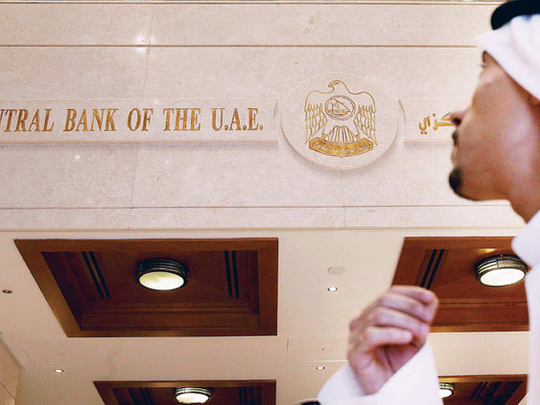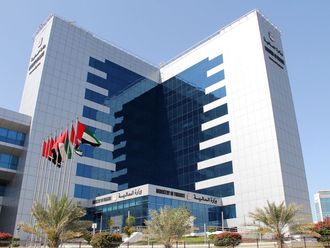
Dubai: The total provisions for non-performing loans of banks operating in the UAE increased 36 per cent to Dh44.3 billion last year compared to Dh32.6 billion in 2009, the Central Bank of UAE reported in its banking indicators posted on its website.
The UAE banking sector's bad loan provisions were up 65.5 per cent in 2009 compared to 2008. On a monthly basis, the bad-loan provisions surged 7.5 per cent in December compared to Dh41.2 billion in November.
Although the full-year provisions continued to surge last year, with a few leading banks reporting declines in provisions in the fourth quarter of last year, bankers and analysts are hopeful that loan impairments and provisions have peaked in the country.
While Abu Dhabi Commercial Bank (ADCB) managed to return to profit, generating net profits of Dh391 million, up from a Dh513 million net loss in 2009, National Bank of Abu Dhabi (NBAD) reported net profits of Dh3.68 billion, up 22 per cent year on year.
Analysts say the significant decline in loan impairment provisions of banks such as ADCB shows the positive results of balance sheet repair initiatives by many banks.
"ADCB's provisions declined 69 per cent year-on-year to Dh647 million in the fourth quarter. On a full-year basis, provisions were at Dh3.3 billion, down 12 per cent," said Mohammad Hawa, an analyst with Credit Suisse.
Boosting liquidity
While the total assets of all banks together exceeded Dh1.6 trillion last year compared to Dh1.51 trillion in 2009, total bank deposits were up 6.8 per cent at Dh1.04 trillion in 2010 compared to Dh982 billion at the end of the previous year. Central Bank statistics for the third consecutive month show deposits exceeded loans. Despite efforts by the Central Bank to boost liquidity in the banking system, credit stagnated in lower single digits, compared to average growth rates in excess of 30 per cent between 2004 and 2008.
Loan growth for the whole of last year was marginal at 1.3 per cent from Dh1 trillion in 2009 to Dh1.03 trillion in 2010.
Although the Central Bank last year cut its benchmark repurchase rate to 1 per cent and the government guaranteed local bank deposits and interbank loans, created a Dh50 billion credit facility and offered additional liquidity support of Dh70 billion, most banks remain risk averse.
High lending rates
While analysts at Credit Suisse expect credit to expand by 10 per cent this year, Dubai-based Shuaa Capital said it expects credit growth to recover from the second half of this year with an overall projected growth of 5 to 6 per cent.
UAE Central Bank Governor Sultan Nasser Al Suwaidi said last week that the banking system is not short of liquidity. However, the lending rates are very high and many banks are still reluctant to lend.
Money supply rises
The central bank report also said the country's money supply (M3 or the broad money), which includes all physical money such as coins and currency demand deposits, time-related deposits, savings deposits, and non-institutional money-market funds, institutional money-market funds, and short-term repurchase agreements, along with other larger liquid assets together increased 3.9 per cent in December 2010 from a year earlier.












